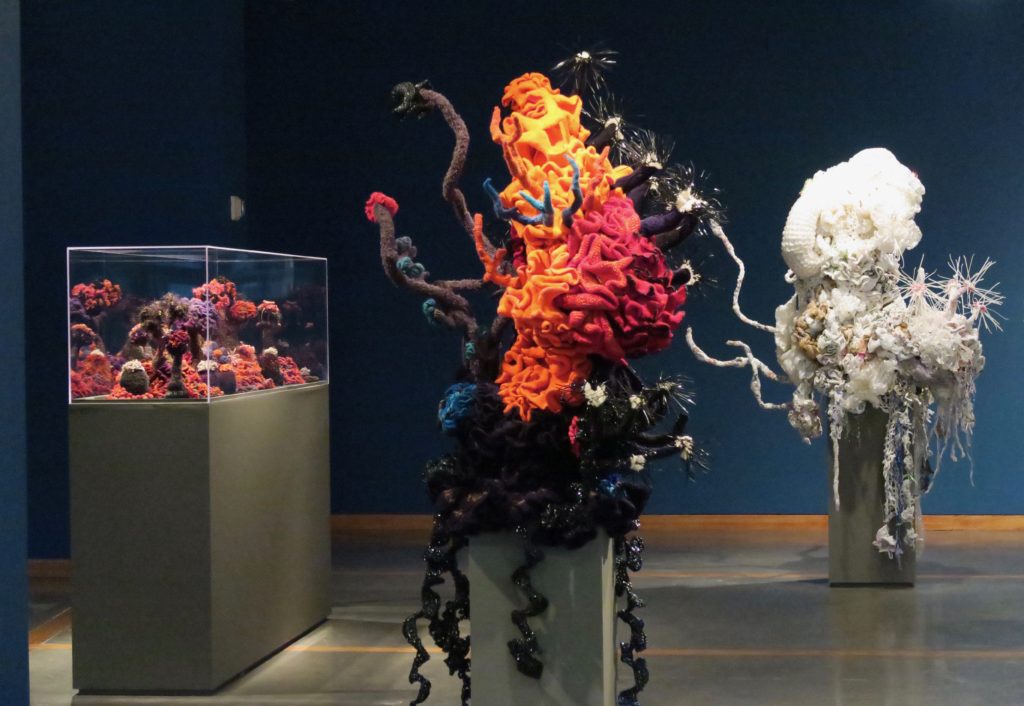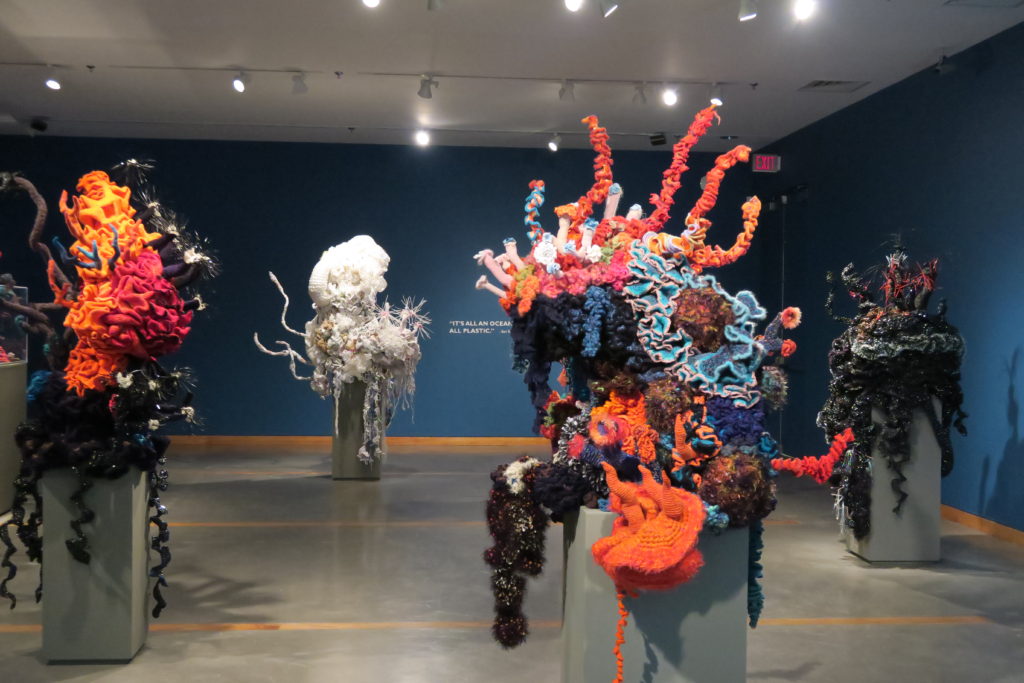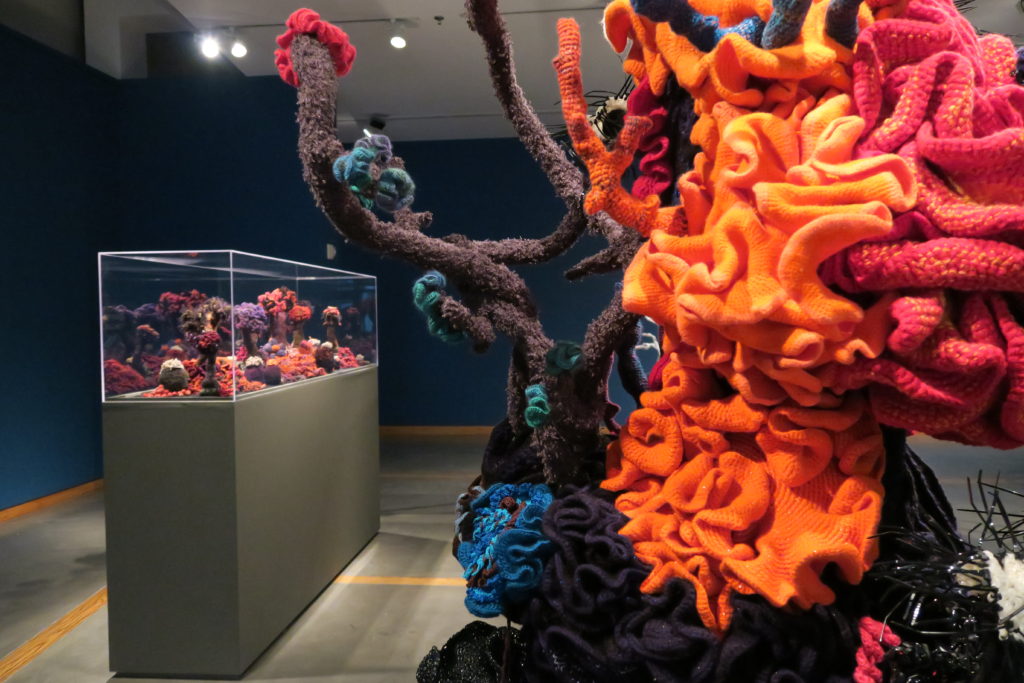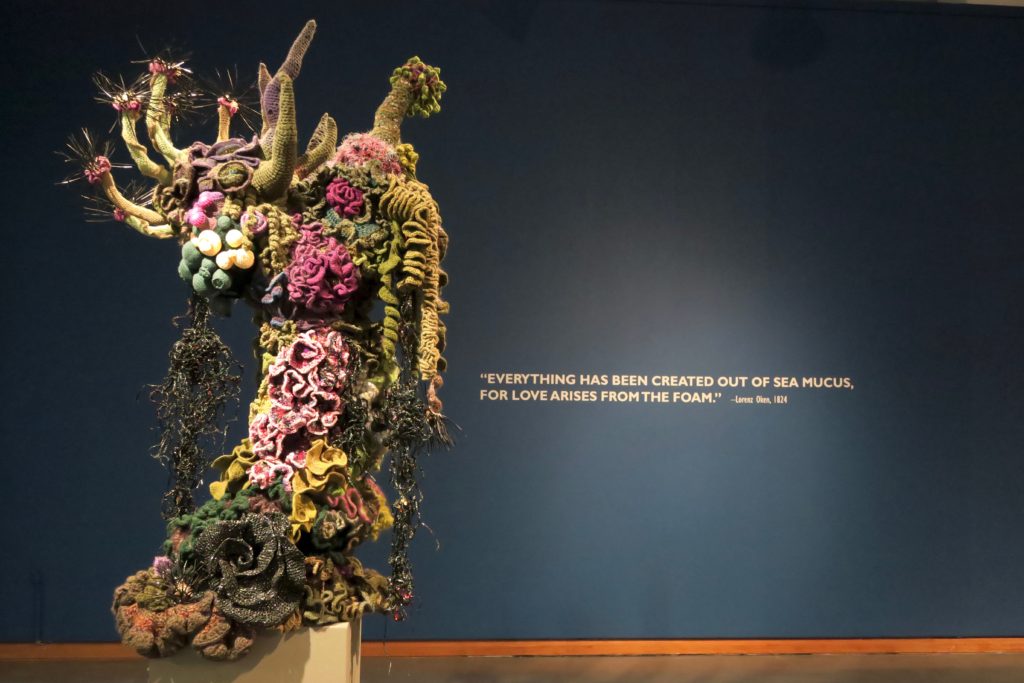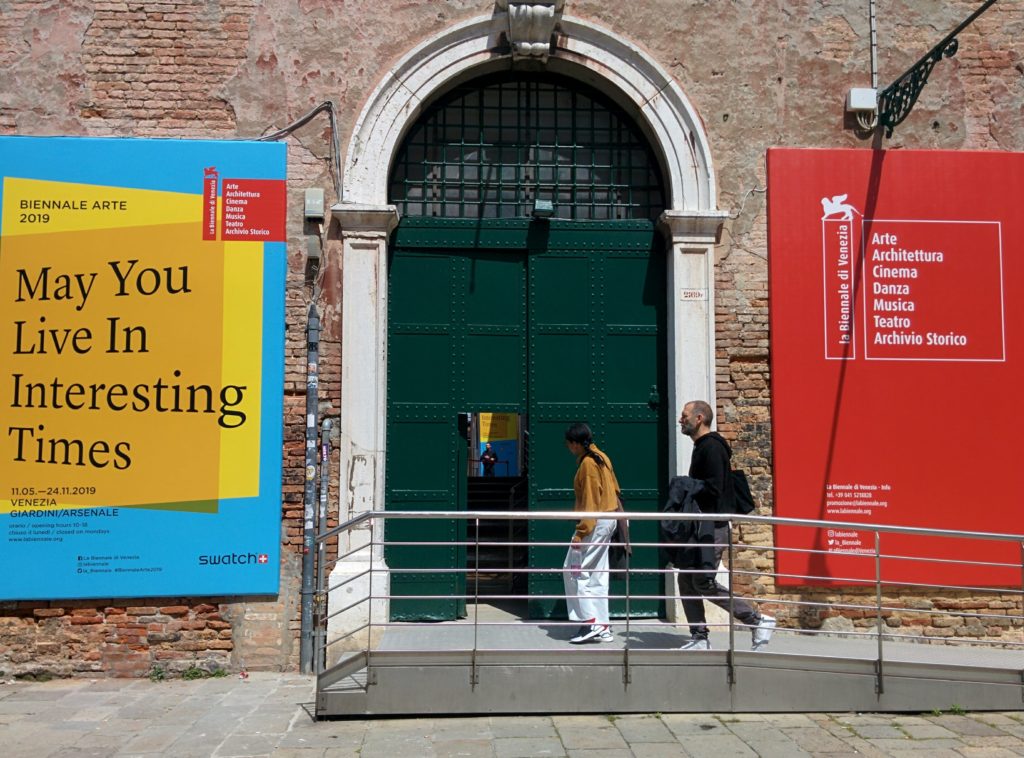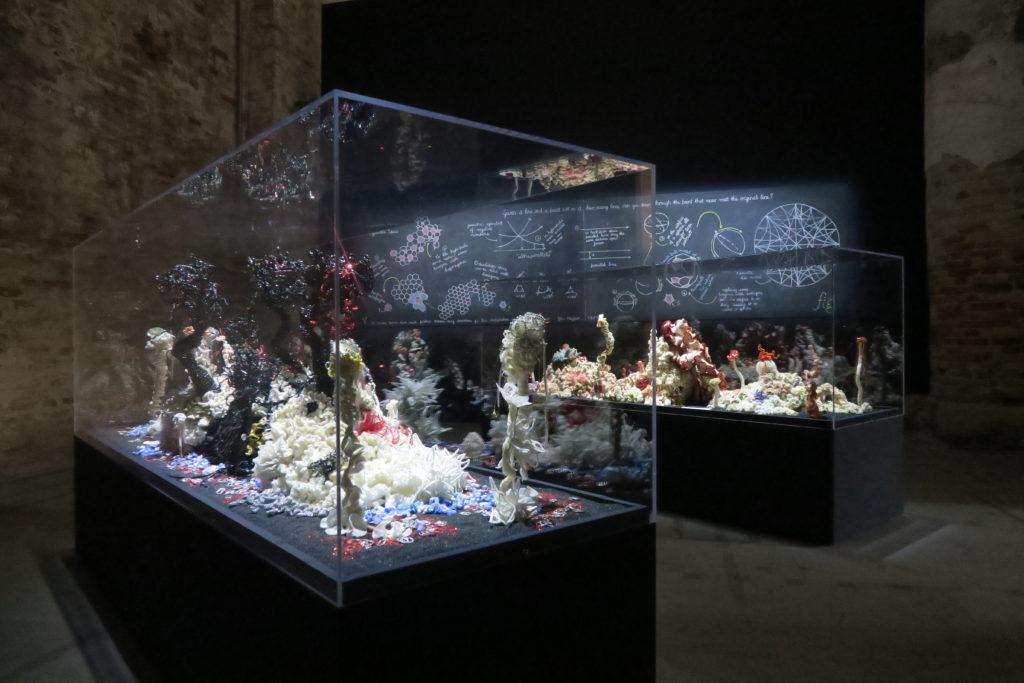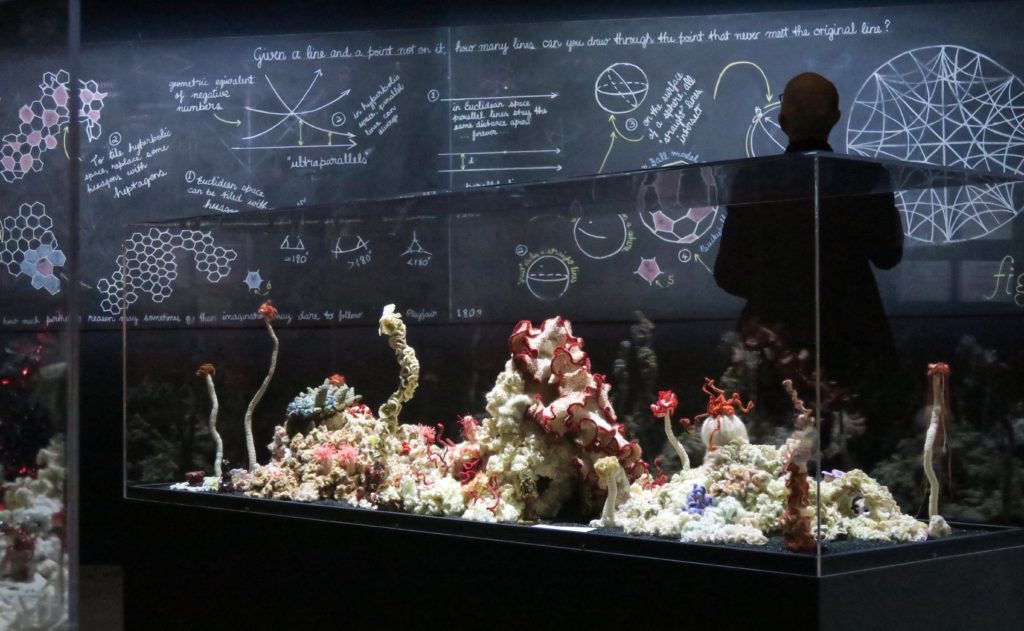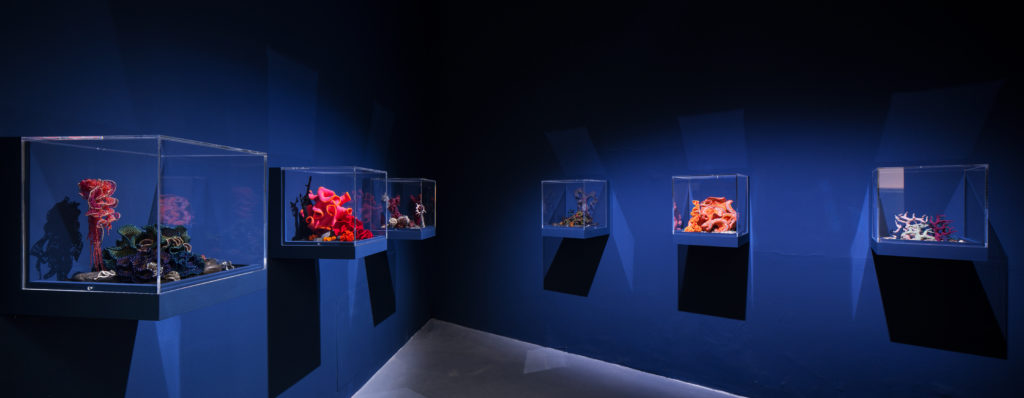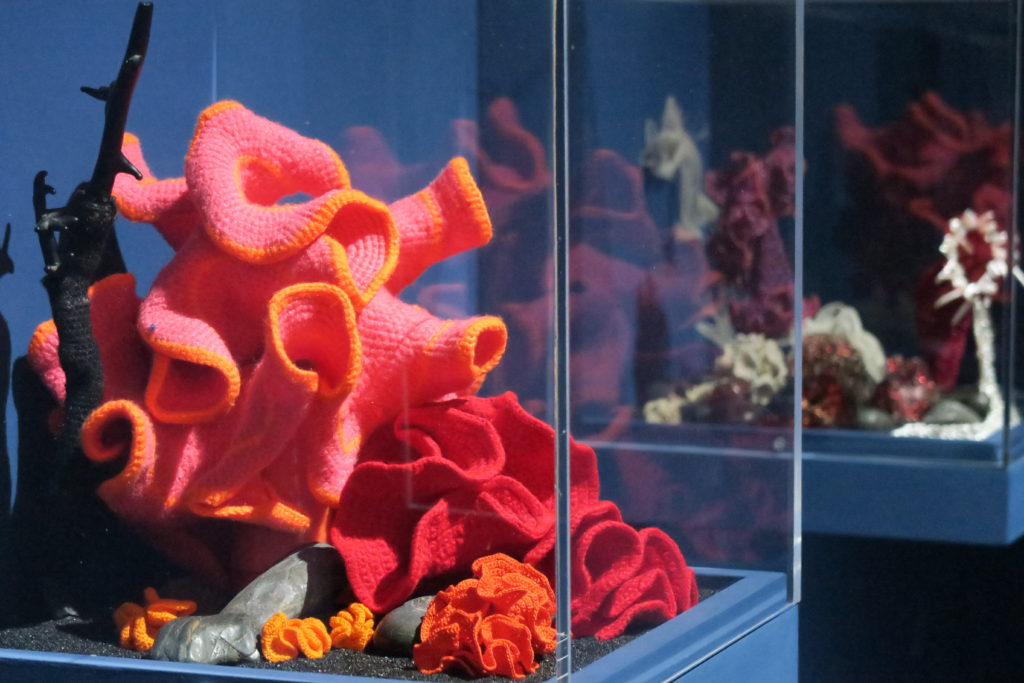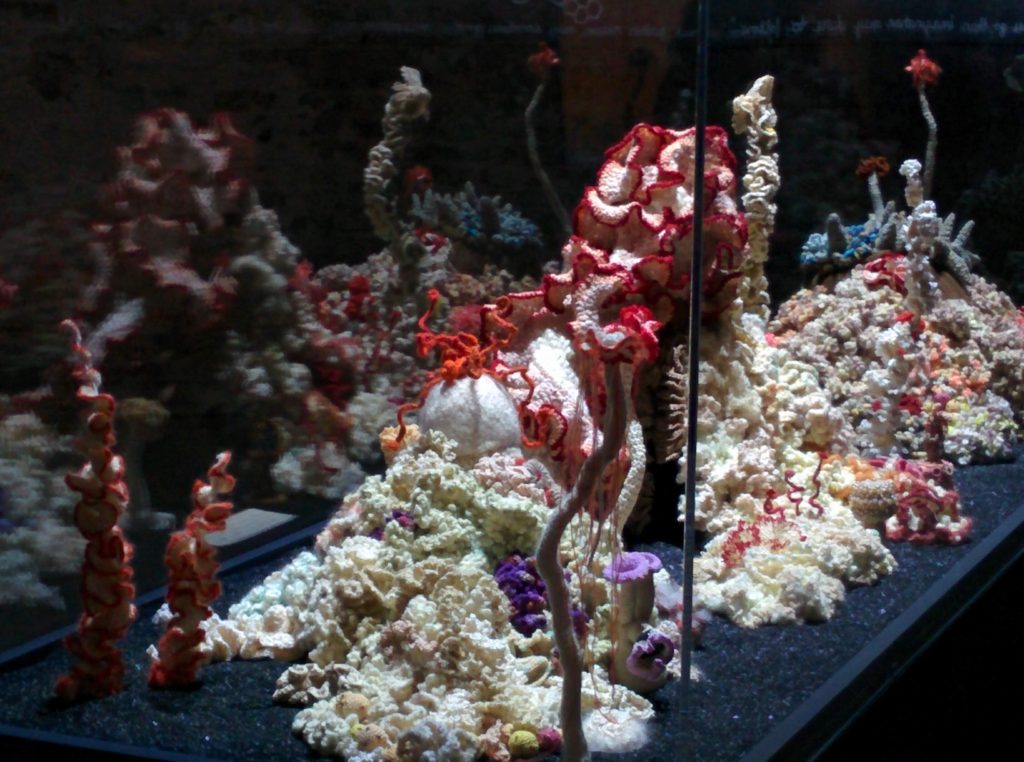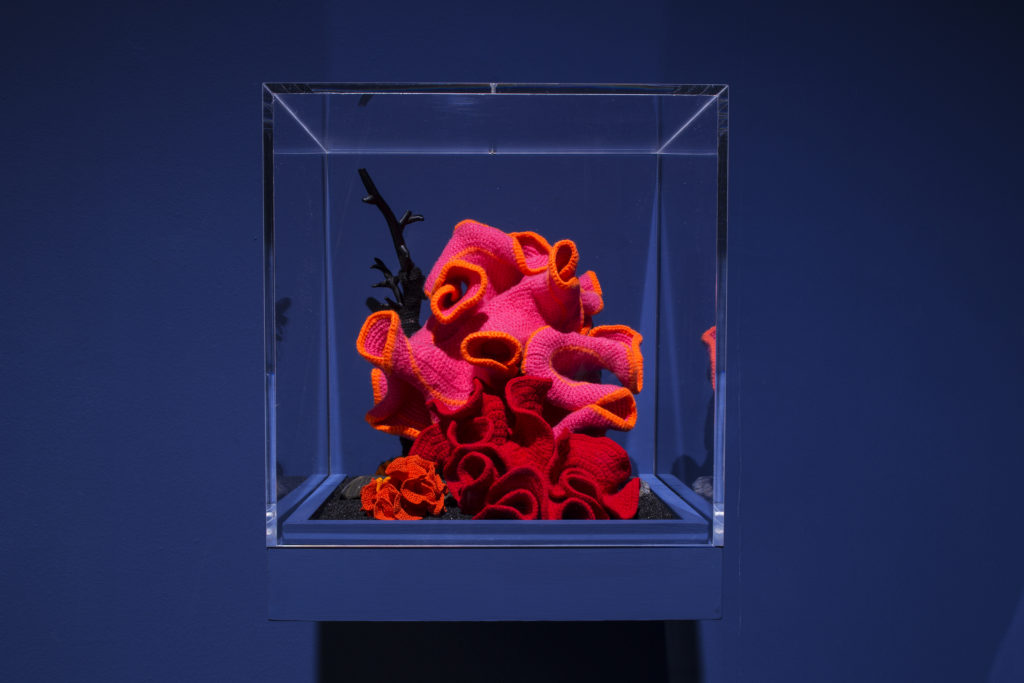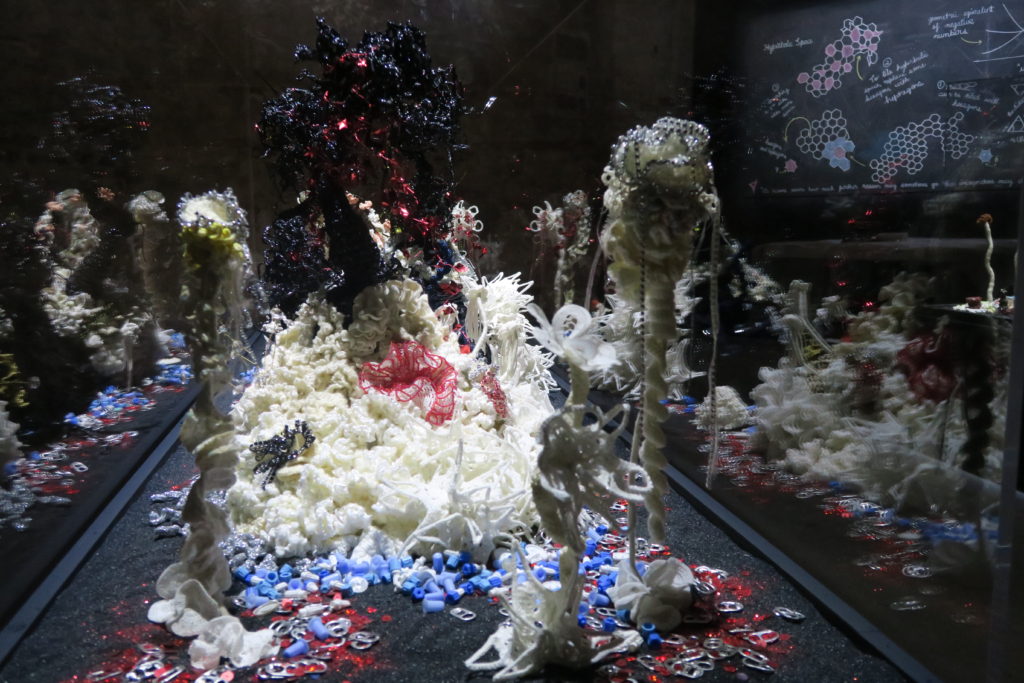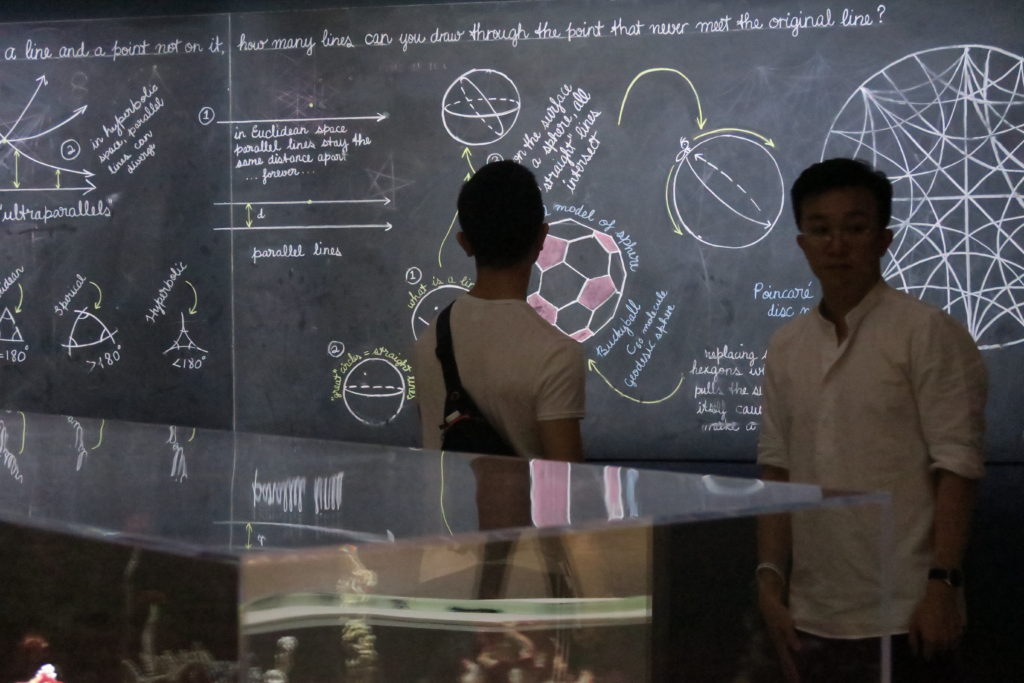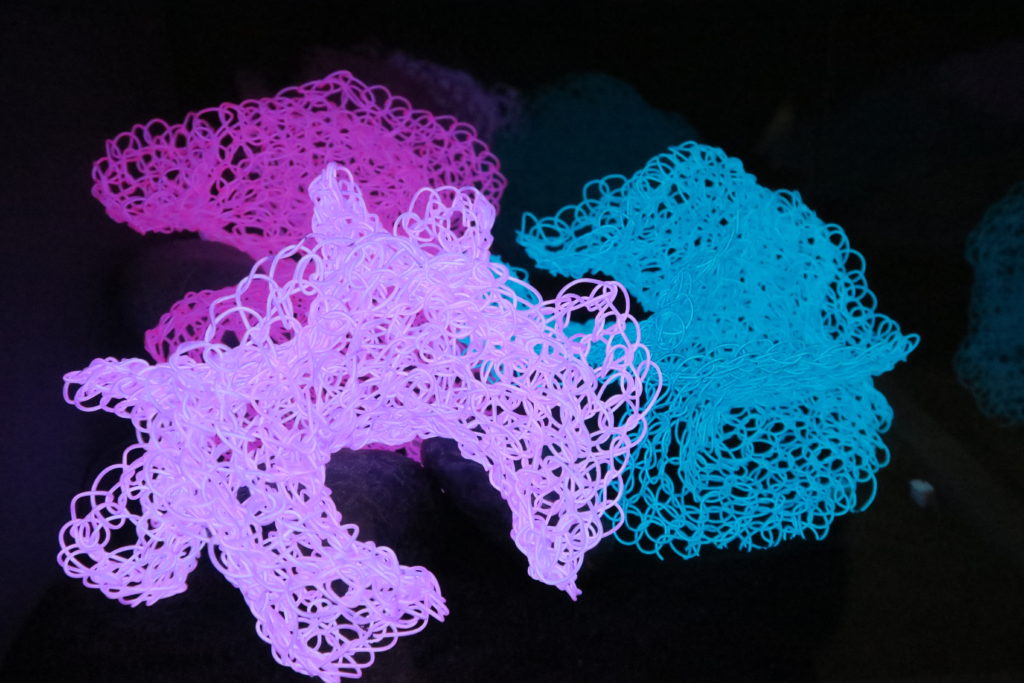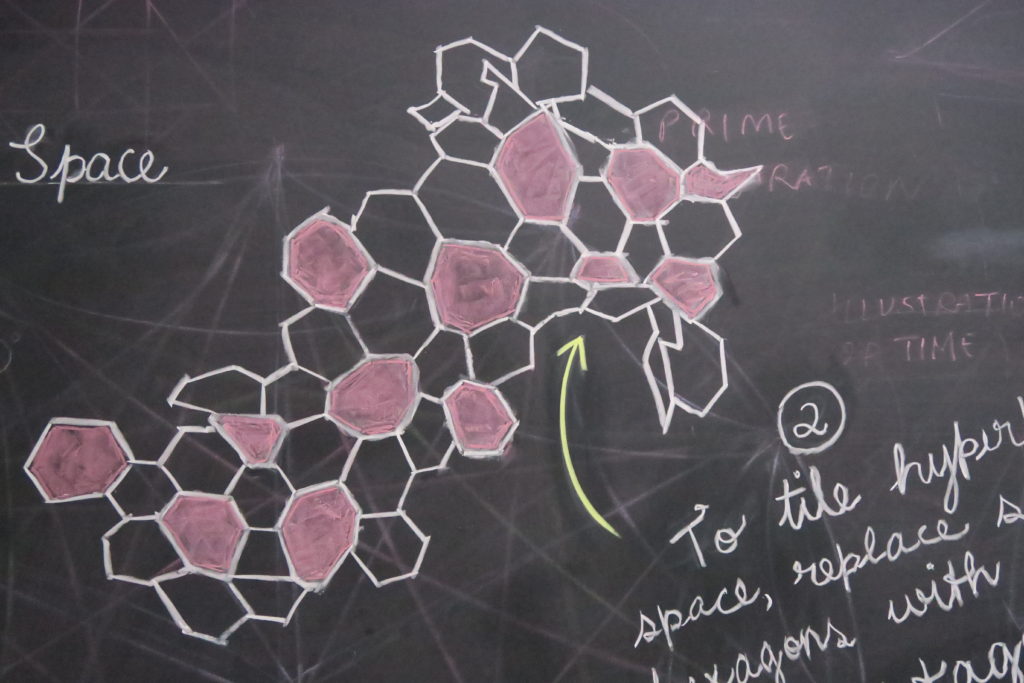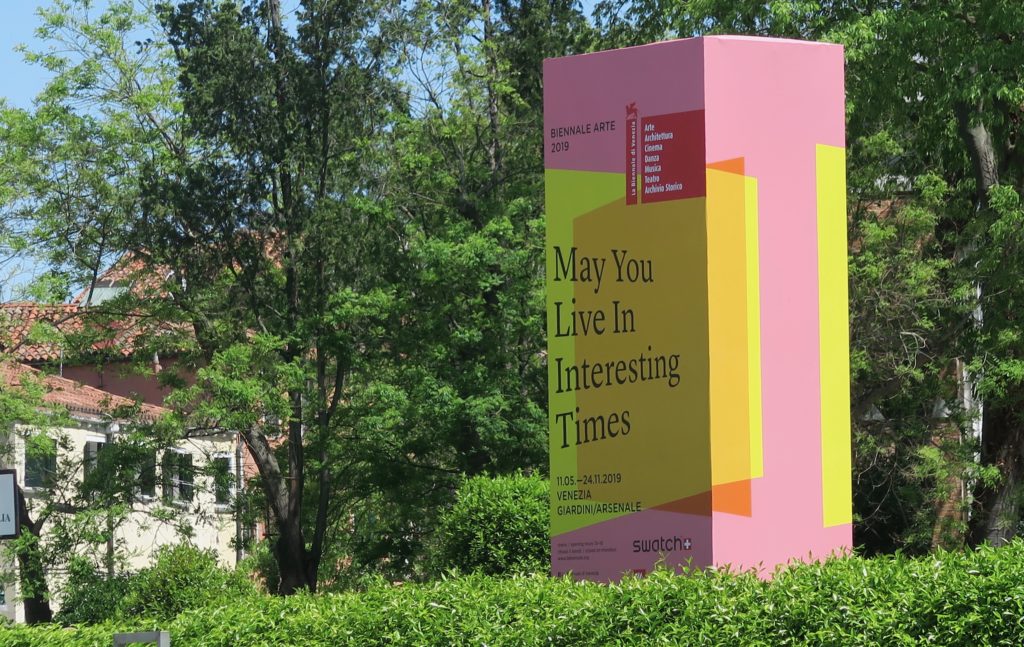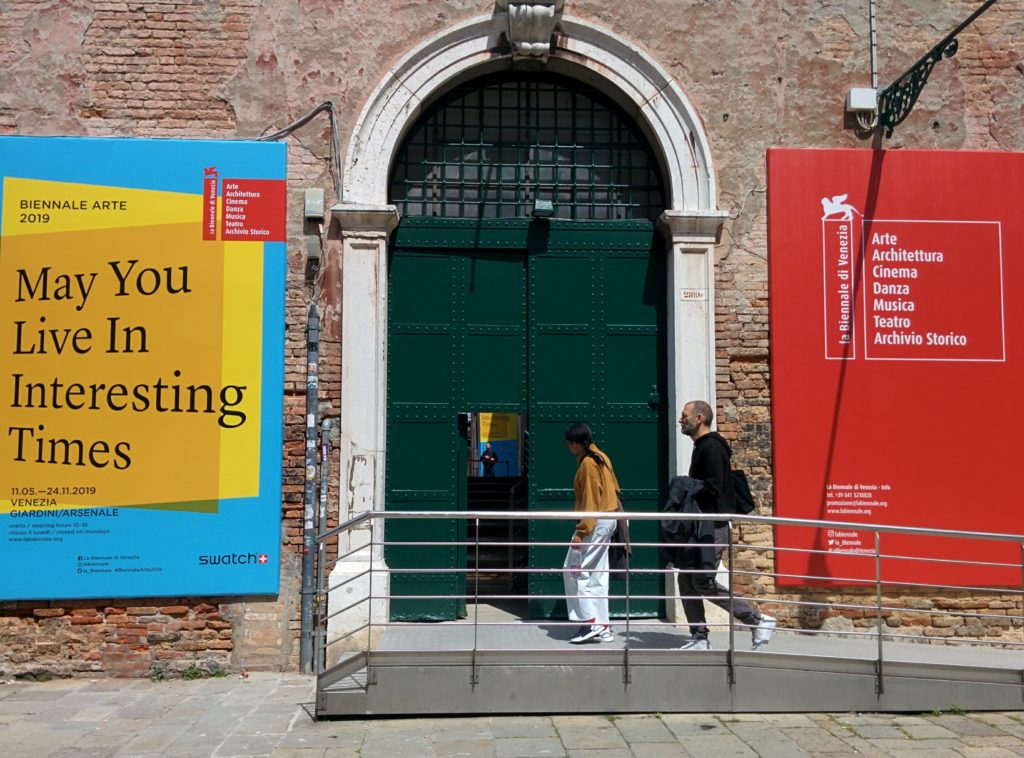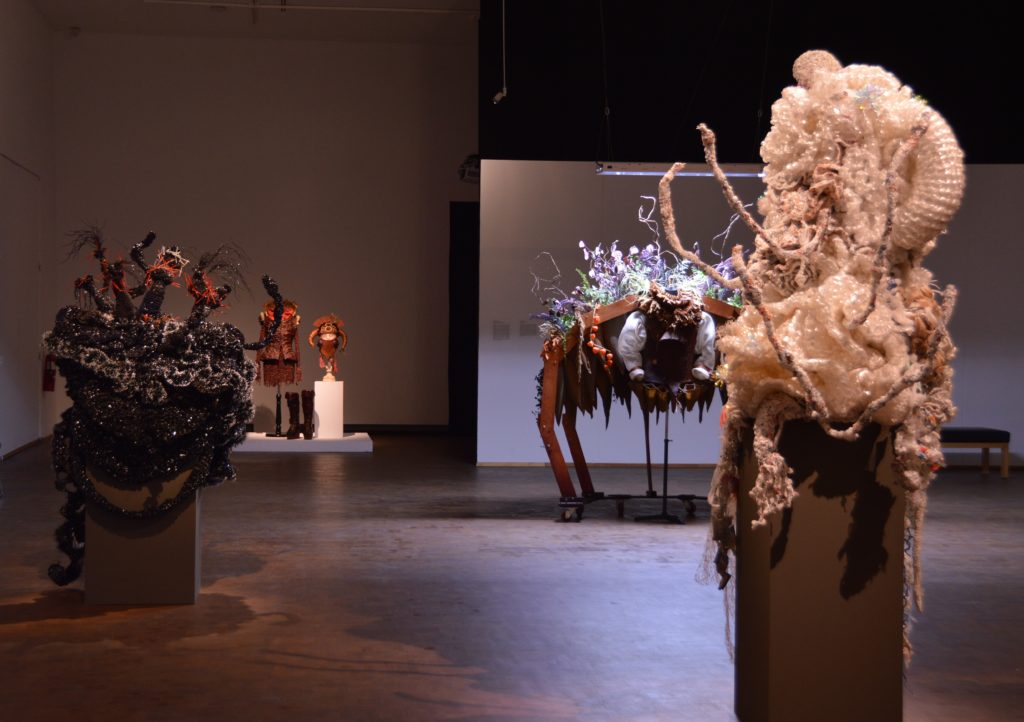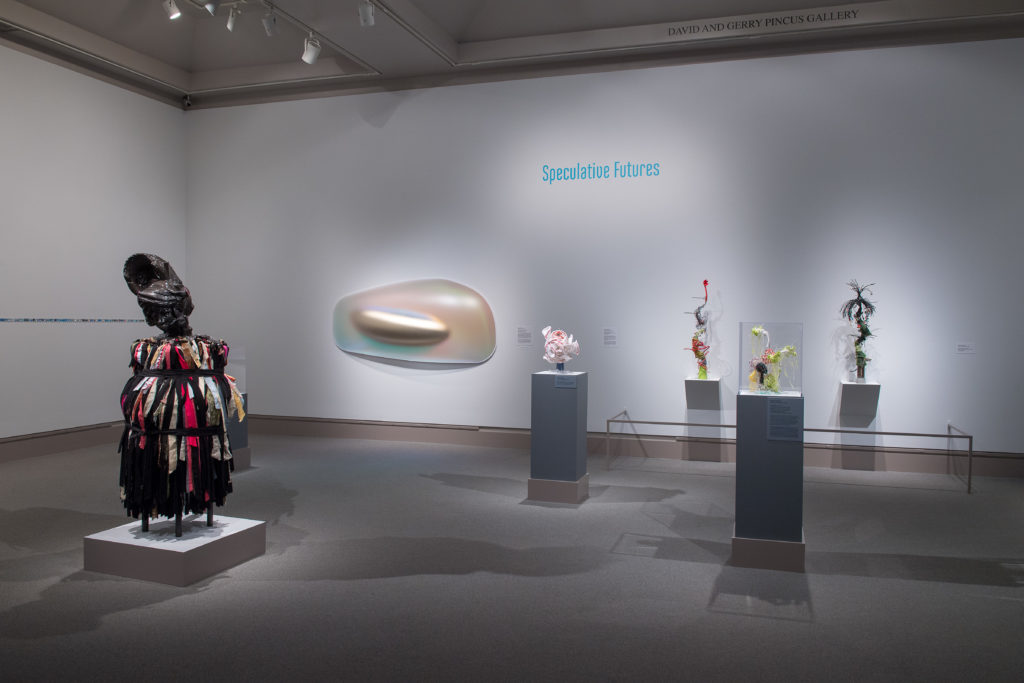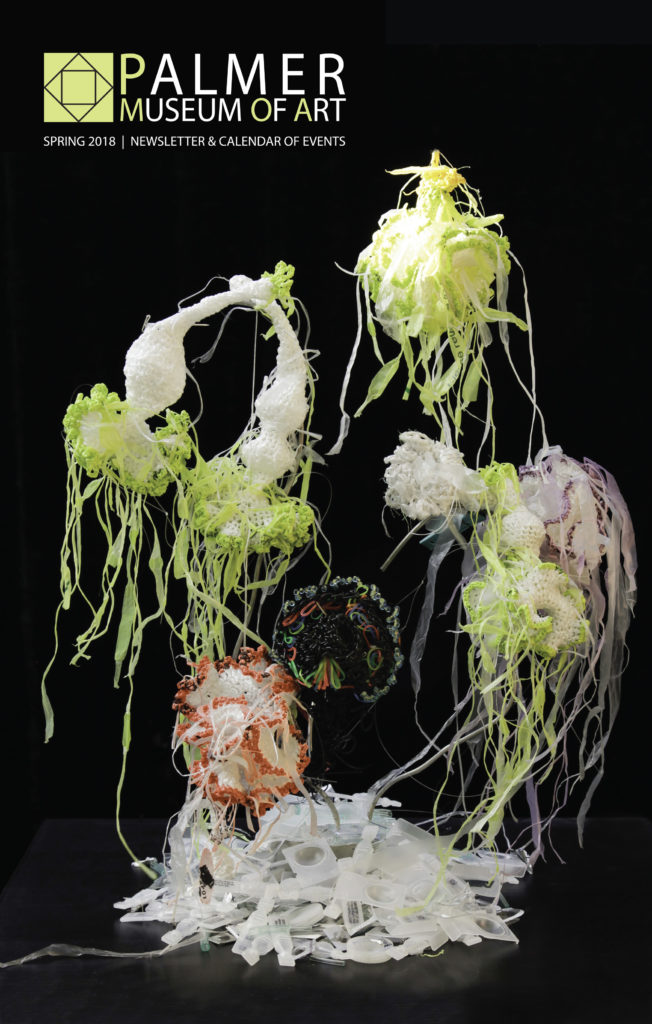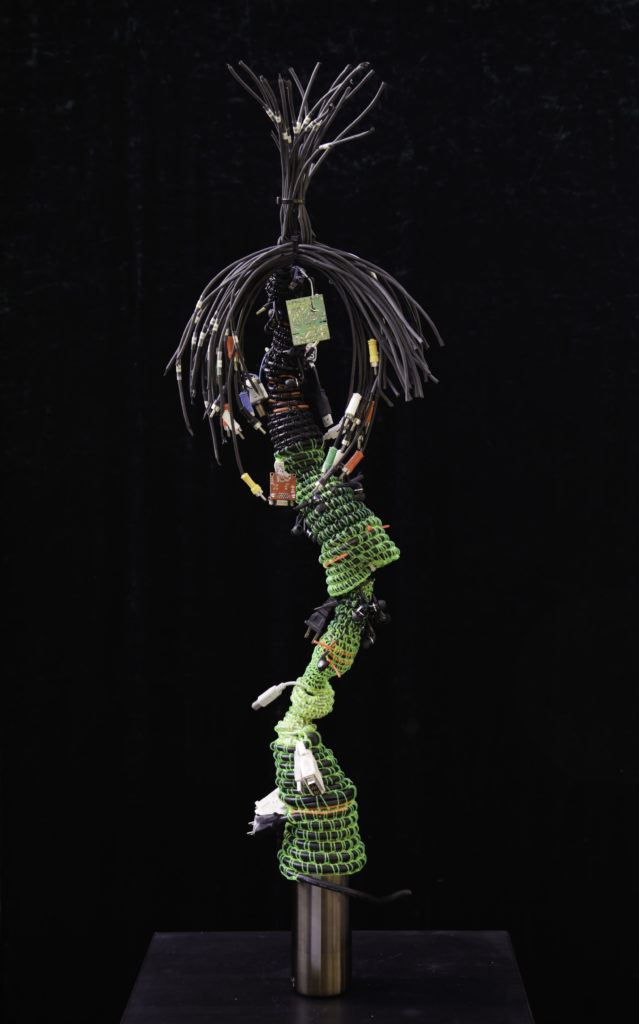While parts of the Crochet Coral Reef are in the Venice Biennale, other portions are on show at Lehigh University Art Galleries in Bethlehem, PA. In Venice, the installations focus on the delicate natural history dimension of the project highlighting bejeweled confections featured in our Bleached Reef, Toxic Reef and miniature coral Pod Worlds. At Lehigh, the show is framed around six giant Coral Forest sculptures – three crafted from yarn and three from plastics. Where the yarn works reference the organic beauty of living corals, the plastic pieces call attention to the post-modern present suffused with throw-away synthetics. Named Medusa, Stheno, Eryali, Ea, Nin Imma, and Chthulu – after the Gorgons of Greek mythology – these sculptures collectively stand like a surreal undersea forest inviting visitors into a space of contemplation at once joyously absurd and tragic. Within the forest is a vitrine housing the Branched Anemone Garden, a crocheted coraline diorama inspired by the Great Barrier Reef along with the blood-orange hues and paleolithic drama of Australia’s Kimberly Desert. Now that real reefs are disappearing at an unprecedented pace these crochet reefs may one day be a reminder of what we have so carelessly destroyed.
Lehigh University Art Galleries – Exhibition website
The works on display are crocheted by Margaret and Christine Wertheim, with contributions from: Shari Porter, Helen Bernasconi, Sarah Simons, David Orozco, Evelyn Hardin, Jill Schrier, Tane Clark, Nancy Yahrous, Jane Canby, Helen Bernasconi, Anitra Menning, Marianne Midelburg, Helle Jorgensen, Anna Mayer, Jemima Wyman, Christina Simons, Jing Wong, Clare O’Callaghan, Kathleen Greco, Matthew Adnams, Shari Porter, Heather McCarren, Una Morrison, Beverly Griffith, Gina Cacciolo, Pate Conaway, Barbara Wertheim, Katherine Wertheim, plus Tija Viksna and the Latvian Satellite Reef crafters.
Photo Gallery – Click on any image to enlarge.
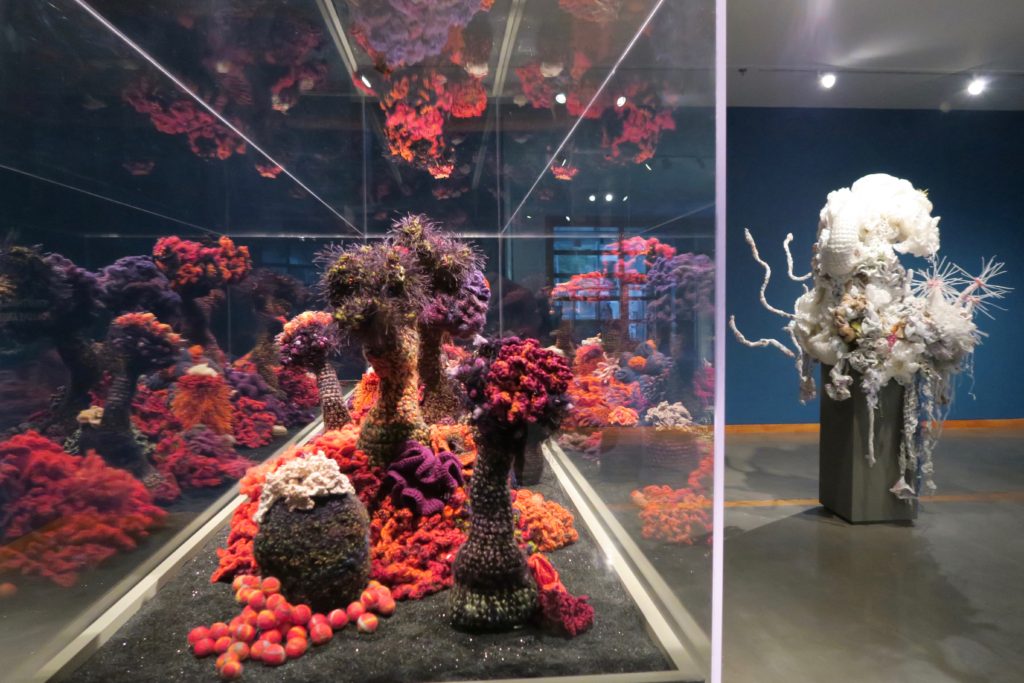
“Branched Anemone Garden” with vitrine reflections, plus “Coral Forest – Nin Imma”, crocheted from plastic shopping bags and saran wrap.
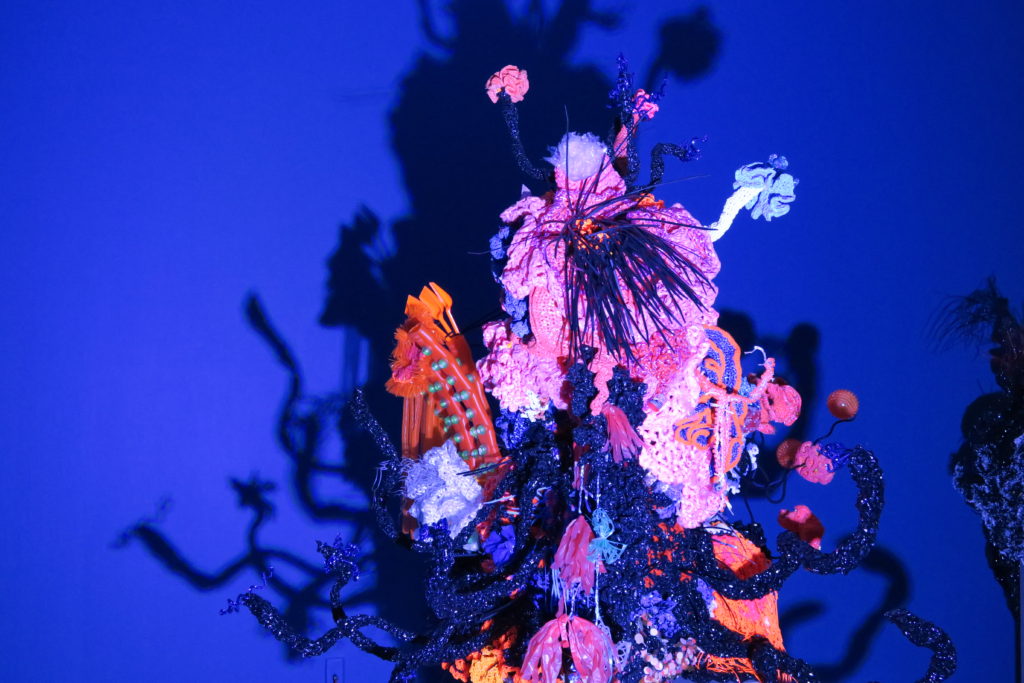
“Coral Forest – Ea”, crocheted from plastic shopping bags, video tape and found plastic debris. The work is photographed under EcoTech Marine aquarium illumination lights.
- Also in the exhibition is the Latvian Isola by Tija Viksna and the Latvian Satellite Reef crocheters; plus Carnation Mound by Marianne Midelburg and Sarah Simons.
- Branched Anemone Garden is loaned from the collection of Lisa Yun Lee.
- Coral Forest – Stheno is loaned from the collection of Jorian Polis Schutz.
Exhibition design by Mark Wonslider and William Crow.
All photos © IFF by Margaret Wertheim
The IFF acknowledges ongoing support for the Crochet Coral Reef project from the Opaline Fund of the Jewish Community Federation and Endowment Fund.
